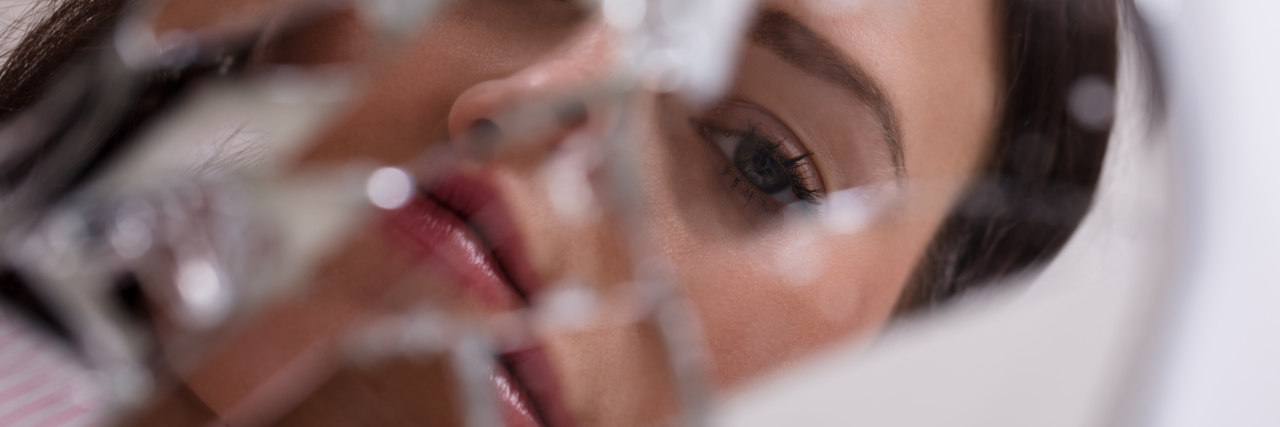Standing in front of the mirror today, I hardly recognize the girl I was as a child. The long, blonde hair and tan skin are gone, replaced by white strands of hair and ghostly white skin. At least, that’s what I really look like today. But the world only sees my dark brown hair dye and tanner — because that’s all I let them see.
Vitiligo has taken 100% of my skin color and now part of my hair. I don’t expect you to understand how that feels, because the chances of this happening are less than .01%. In other words, it’s unimaginable. And yet, it happened to me. And after 20 years, I’m still trying to mentally grasp that change.
Here’s what it’s like to lose 100% of your skin color — and then some.
1. You’re invisible again — and thankful for it.
No stares. No comments. No questions. The first time I put on full tanner and walked down the street, I was shocked — and thrilled — to find that I was invisible. When you live with vitiligo, you are constantly stared at sometimes with comments and pointing fingers to go with it. It’s exhausting and intimidating to live this way. Inside, you’re going through a mental tug of war; telling yourself you’re beautiful, while being constantly reminded that you look “weird” by every set of staring eyes. To be invisible is a welcomed relief that can’t even be put into words.
2. You still feel like you have spots — at first.
After living with spots for 20 years, the feeling of having spots doesn’t go away…at least at first. No one else could see the spots, but I still felt like I had them. I still looked at my skin like they were there. I still panicked at the thought of wearing shorts. To me, I was one big canvas of spots all patched together. They had just been there, and I knew they could come back. It took another few years for this constant anxiety about someone seeing my skin to go away. Today, I still get anxious about it from time to time, but I know it’s only psychological and do my best to let it go.
3. You carry an invisible burden.
For most people with vitiligo, your spots tell a story. They let people know that you’re dealing with a skin condition. Today I’m still struggling to accept this condition, and wrap my head around the fact that my skin has completely changed colors. Yet coworkers and friends that I’ve met within the past few years are surprised to find this out. They wouldn’t know — and couldn’t know —unless I told them. On the one hand, having this level of privacy is a beautiful gift. On the other hand, it’s interesting to hear people make assumptions about my life that are laughable to me because they can’t know the 20-year history I carry under my tanner and hair dye.
4. You don’t recognize the girl in the mirror.
The girl in the mirror isn’t me — it’s the result of what an incurable disease has done to me. And that’s hard to accept. I’m often asked why I wear tanner if my spots are gone; why don’t I just let myself be pale? First, I’m quick to explain that “being pale” and having no pigment can look quite different. Yet, I see their point. To them, it probably seems like an easy decision. But it’s one thing to be born with pale skin and just know that that’s who you are. It’s another to wake up every day for 20 years and watch a disease take over your skin color, one little patch at a time. I understand this is a new me, logically. And yet emotionally, some small part of me is holding on to the old me.
A version of this story originally appeared on livingdappled.com.
Photo credit: AndreyPopov/Getty Images

